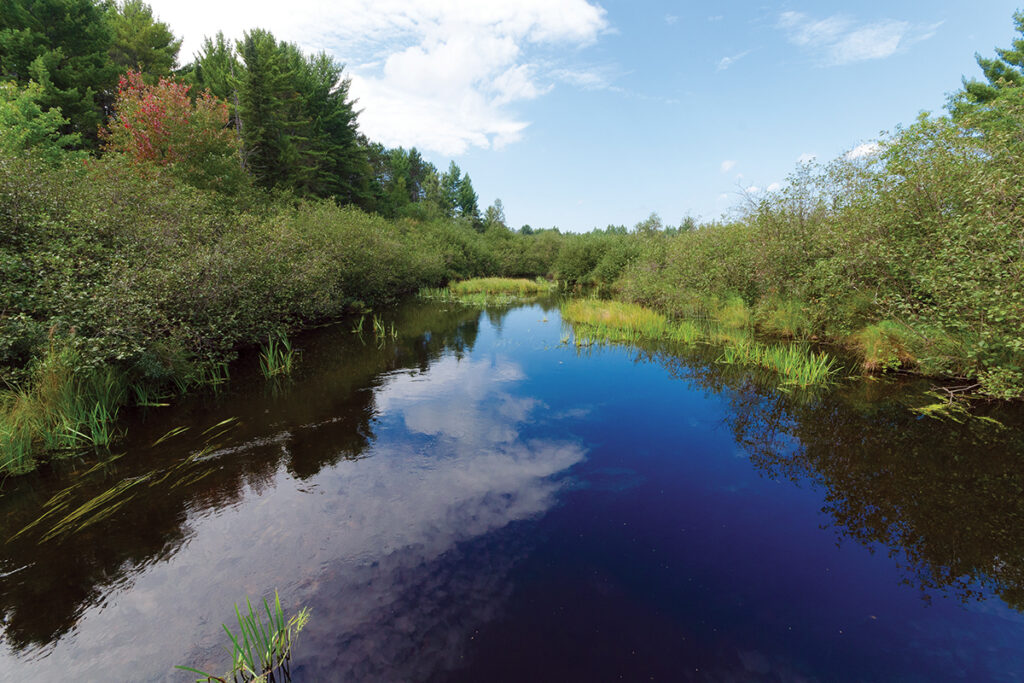This policy brief is part of a volume entitled “The Future of Water Markets: Obstacles and Opportunities,” published by PERC, which addresses timely water policy issues and offers ideas to enhance the future of water markets.
In the United States, policies to control water pollution rely almost exclusively on regulating point source discharges of wastewater—effluent that polluters discharge to a surface waterbody through an identifiable source, such as a pipe. These regulations, part of the National Pollutant Discharge Elimination System (NPDES) under the Clean Water Act, have contributed to improvements in surface water quality in the United States since the 1970s. However, the marginal costs of technological wastewater abatement at point sources, such as wastewater treatment plants, now often exceed the marginal benefits. Expensive abatement technologies often deliver only negligible improvements to the concentrations of pollutants in effluent. Despite billions of dollars in investment to reduce the levels of pollution in point source discharges, many surface waterbodies in the country remain impaired, meaning that they do not meet federal water quality standards. In many cases, impairments occur even though the point sources that discharge to these waterbodies comply with their individual NPDES permits.
Alternatively, nonpoint source water pollution, which consists of urban or agricultural runoff, is essentially ignored by the Clean Water Act and most state water pollution policies. These sources of water pollution are more difficult to identify, and the amount of their discharges to surface waterbodies are equally difficult to quantify. As a result, nonpoint source pollution has become the largest source of surface waterbody impairment in the United States.
The current challenge is to achieve greater marginal benefits of water pollution abatement at lower marginal costs from nonpoint sources. Altering the Clean Water Act to treat nonpoint source pollution like point source pollution (through discharge permits), however, would be difficult and politically challenging. But the Clean Water Act grants state environmental protection agencies the authority to establish water quality markets, where point and nonpoint sources can trade pollution offset credits to decrease overall water pollution in an area. In these markets, point sources avoid high marginal costs of water pollution abatement by paying other polluters to implement practices that reduce discharges elsewhere in a watershed.
Two types of trading can occur in such water quality markets. First, point sources can buy credits from other point sources that have lower marginal costs of pollution abatement; economists refer to this practice as water quality trading. Second, point sources can meet their NPDES-permitted discharge limits by paying upstream farmers to, for example, convert row crop agriculture to permanent vegetative cover. This practice, known as offset trading, can decrease a nonpoint source’s loadings of pollutants to surface waterbodies by the same amount or more than if the point source decreased its discharges through technological abatement, but at a lower cost. In theory, water quality markets are more cost-effective than traditional command-and-control regulation, which often prescribes inflexible technological abatement strategies or allowable discharges, and produce the same or better water quality improvements.
As a result of the inherent benefits of water quality markets, the Environmental Protection Agency (EPA) and state environmental protection agencies, environmental nonprofits, and agricultural associations have encouraged their use for some time. In 2019, the EPA produced a memorandum further encouraging the use of water quality markets, reiterating its “strong support for water quality trading and other market-based programs to maximize pollutant reduction efforts and improve water quality.”
Despite the promise of water quality markets and the broad support of their use, there are few programs where trades occur. Some programs, such as a water quality trading program in Pennsylvania, have successfully brokered trades. In most settings, however, substantial obstacles prevent success in water quality markets, resulting in business-as-usual command-and-control regulation. Several policy recommendations could help deliver on the promise of water quality markets.
Highlights
- Policies to control water pollution from point sources, such as pipes discharging effluent into waterbodies, have contributed to improvements in U.S. surface water quality since the 1970s. The ongoing improvement of processes to remove contaminants from point sources means that today the costs of further reductions are high relative to other approaches.
- Nonpoint source water pollution, which consists of urban or agricultural runoff, is essentially ignored by most water pollution policies and has become the largest source of surface waterbody impairment in the country.
- Water quality markets allow point sources to avoid high marginal costs of abatement by paying other polluters to implement practices that reduce discharges elsewhere in a watershed.
- Despite the promise of water quality markets and the broad support of their use, there are few programs where trades occur. Several policy recommendations could help deliver on the promise of these markets.
Recommendations
- Document and categorize nonpoint source pollution.
- Expand the geographic scope of offset trading programs.
- Promote group compliance.
- Better incentivize market participants.
- Establish a third-party clearinghouse to facilitate offset trades.
READ THE FULL POLICY BRIEF





